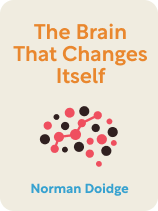

This article is an excerpt from the Shortform book guide to "The Brain That Changes Itself" by Norman Doidge. Shortform has the world's best summaries and analyses of books you should be reading.
Like this article? Sign up for a free trial here.
Are you looking for The Brain That Changes Itself quotes by Norman Doidge? What are some of the most noteworthy passages worth revisiting?
In The Brain That Changes Itself, Norman Doidge explains that the brain is plastic, meaning it can change its own structure and connections in response to stimuli. His book conveys complex ideas in a way that a layperson can understand and illustrates them through stories of real people whose lives have improved thanks to the power of neuroplasticity.
Below is a selection of passages with explanations.
The Brain That Changes Itself: Stories of Personal Triumph from the Frontiers of Brain Science
Your brain is always changing. As you’re reading right now, your brain is rearranging itself to process the information you’re taking in so you can understand and retain it.
In his best-selling book The Brain That Changes Itself, psychoanalyst and best-selling author Norman Doidge uses case studies and centuries of research to provide a thorough but understandable explanation of the concept of neuroplasticity—the phenomenon of the changing brain.
The following The Brain That Changes Itself quotes highlight some of the key ideas.
“Ironically, some of our most stubborn habits and disorders are products of our plasticity.”
Unfortunately, brain plasticity may have downsides, says Doidge. Because plasticity is competitive, when one area of the brain becomes unused, it’s likely to be taken over by other functions that are used regularly. This can make it difficult to break bad habits because using the pathways involved with those habits not only strengthens them, but also weakens the pathways that are not used by the bad habit.
All of us have worries. We worry because we are intelligent beings. Intelligence predicts, that is its essence; the same intelligence that allows us to plan, hope, imagine, and hypothesize also allows us to worry and anticipate negative outcomes.
Doidge also suggests that neuroplasticity could be responsible for excessive worry and disorders like obsessive compulsive disorder. As your brain continually plays through anxiety-inducing scenarios, those pathways become stronger, which means you worry about them even more. Though it may be the cause, Doidge also says that neuroplasticity could be the cure for excessive worry and obsessive compulsive disorder. Therapy that involves reframing the worrisome thoughts into something positive, or distracting yourself with something positive, can help weaken the worry pathways that have become so strong.
“Language development, for instance, has a critical period that begins in infancy and ends between eight years and puberty. After this critical period closes, a person’s ability to learn a second language without an accent is limited. In fact, second languages learned after the critical period are not processed in the same part of the brain as is the native tongue.”
Doidge explains that the reason adults have more trouble learning a second language than children do is that the areas of their brain that process language are already being used to process their first language. It therefore takes more practice for an adult than for a child to create new pathways in that area to correspond to a second language. It’s easier to learn a second language while you’re acquiring your first language because the map of neural pathways for language widens to include both languages as they develop at the same time. However, when you’re learning a second language as an adult, that new language has to develop a brand new neural map rather than incorporating it into the first language’s map.

———End of Preview———
Like what you just read? Read the rest of the world's best book summary and analysis of Norman Doidge's "The Brain That Changes Itself" at Shortform.
Here's what you'll find in our full The Brain That Changes Itself summary:
- How brain plasticity can help those with brain damage or congenital brain disorders
- Stories of real people whose lives have improved thanks to neuroplasticity
- A look at some of the negative effects neuroplasticity can have






